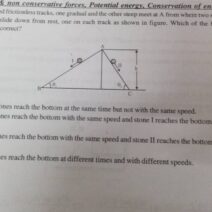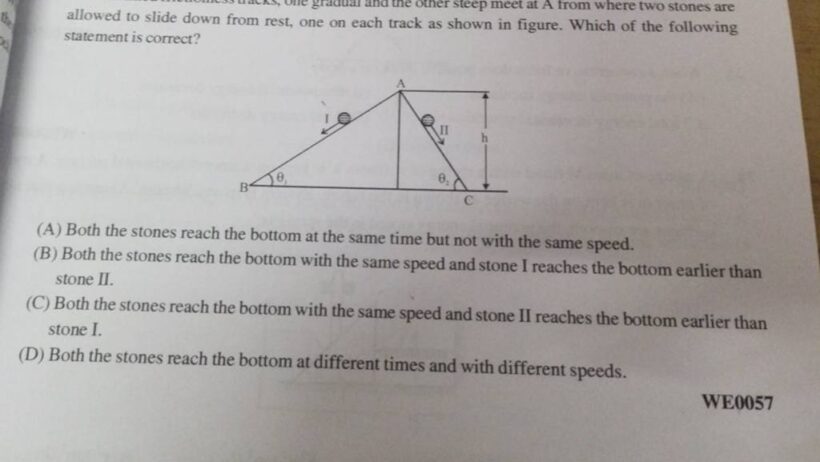Understanding potential energy is crucial in various scientific and engineering applications, especially when dealing with forces that are not conservative in nature. Non-conservative forces, unlike conservative forces like gravity, can dissipate energy, complicating the measurement and calculation of potential energy. This article aims to elucidate the process of finding potential energy in systems influenced by non-conservative forces, highlighting intricate concepts while ensuring clarity.
1. Introduction to Forces and Energy
To grasp the implications of potential energy in non-conservative systems, it is essential to delineate between conservative and non-conservative forces. Conservative forces, such as gravitational and elastic forces, allow for the conservation of mechanical energy within a system. The work done against these forces is path-independent and can be fully recovered as potential energy. Conversely, non-conservative forces—like friction, air resistance, and tension—can dissipate energy as heat, leading to energy losses that are fundamentally irreversible.
2. Characteristics of Non-Conservative Forces
Non-conservative forces do not comply with the principle of conservation of mechanical energy. When a system is subject to such forces, the energy can morph into forms such as thermal energy or sound energy. This transformation is critical when considering energy transfers in real-world applications, where efficiency is often diminished. To quantify potential energy in the presence of non-conservative forces necessitates a more comprehensive approach.
3. The Work-Energy Principle
A pivotal concept when calculating energy in systems with non-conservative forces is the work-energy principle. This principle states that the net work done by all forces acting on a particle equals the change in its kinetic energy. Therefore, the work done by non-conservative forces must be explicitly calculated to determine potential energy variations. In mathematical terms, this can be expressed as:
W_nc = ΔKE
Where W_nc denotes the work done by non-conservative forces and ΔKE represents the change in kinetic energy of the system. This relationship allows one to ascertain the effective potential energy by considering how energy is being transformed.
4. Calculating Work Done by Non-Conservative Forces
The first step in determining potential energy associated with non-conservative forces is calculating the work done during the process. This calculation often involves integrating the force over the distance moved. For instance, if friction is involved, the work done can be computed through the formula:
W = ∫ F_friction dx
Here, F_friction denotes the frictional force acting on the object and dx is the displacement. In some instances, this integration might yield values dependent on the path taken, unlike conservative forces, where the path does not affect the final energy state. Understanding and accurately computing this work is vital to determining the energy states of the system accurately.
5. Energy Transformation and Losses
Once the work done by non-conservative forces is quantified, it can be integrated into the broader context of energy transformation within the system. Energy losses resulting from non-conservative forces often manifest as thermal energy. For example, when an object slides down a frictional surface, part of its gravitational potential energy is transformed into heat, resulting in a lower kinetic energy than anticipated. Recognizing these transformations is key to understanding the overall energy dynamics at play.
6. Establishing a Reference Point
Establishing a reference point for potential energy calculations is particularly pivotal in non-conservative systems. Since energy can be consumed and lost throughout a process, a systematic approach is critical. A common tactic involves selecting a point where the potential energy is defined to be zero—typically where the object is at rest or at a maximum displacement. By computing initial and final states relative to this framework, one can derive a clearer expression of potential energy changes, accounting for the dissipative effects introduced by non-conservative forces.
7. Practical Applications
The principles discussed are not simply theoretical; they have tangible implications in fields such as engineering, environmental science, and even sports dynamics. For example, engineers must consider the effects of non-conservative forces when designing systems to minimize energy losses. This is most evident in vehicle design where optimizing fuel efficiency is paramount. Understanding the relationship between potential and kinetic energy amid frictional forces can inform innovations in energy conservation and sustainable practices.
8. Conclusion
In summary, determining potential energy in systems affected by non-conservative forces involves a structured method of calculating work, recognizing energy losses, and establishing reference points. This multifaceted approach, grounded in the work-energy principle, reveals a more nuanced understanding of energy dynamics that transcends simple calculations. The confluence of forces and energy underscores the complexity of interactions in our world and the necessity for continued exploration within the realms of science and technology, particularly in addressing challenges like climate change. By grasping these concepts, one can better appreciate the vast and intricate tapestry of energy transformations that govern our universe.






